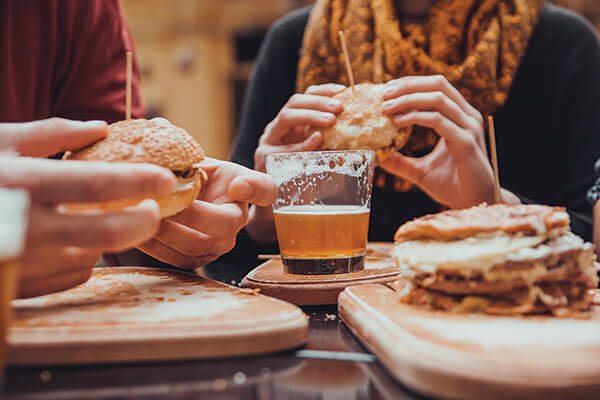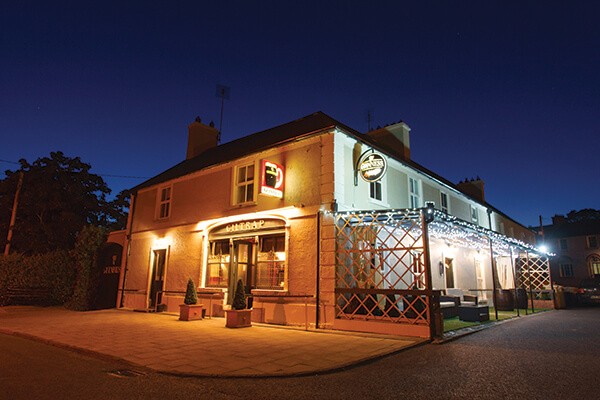The modern Irish pub offers an extraordinary degree of diversity in terms of both the food and drink available. Well known industry afficianado Liam Campbell elaborates on his three simple guidelines for publicans who want to create a few tasty beer and food combinations for punters
The Irish pub has reinvented itself in so many ways since the 1960s when my father and his three siblings each ran their own pub in the west. I come from a family of five publicans but with just two now remaining, my cousin and namesake, Liam Campbell, who runs his late father’s pub on Main Street in Swinford, Co Mayo, and my second cousin, Catherine Johnston, who runs the Liffey Arms in Newbridge, Co Kildare. In fact, I made my entry into the world in a home delivery on my father’s new pub’s opening day – a farmer’s Fair Day in the bedroom above the bar. I think I cost my father more standing his new customers a round than he made that day! Anyway, enough reminiscing – the recent renaissance in Irish craft beers and the steady strong growth in quality pub meals and snacks share a similar theme of innovation and creativity.
Keep Your Balance
Matching the weight or alcohol strength of a beer with the richness and intensity of a dish allows the two to balance each other. The richness in a beer can include not just alcohol but also the malt character and degree of roast, from pale malt to chocolate malt, and the presence of aromatic or bittering hops etc. A beer’s appearance, aroma, flavour and keeping ability is affected by hops. The 200 or so different varieties of hops are divided between aroma hops and bittering hops, the latter giving an attractive bitterness, refreshing acidity and tannic texture to the taste buds. In the food, the richness increases with the level of fat, butter, cream, cheese etc, and food flavours are intensified depending on whether the ingredients are grilled, fried or roasted. The addition of spice will also enrich and highlight the dish’s flavours. Umami is the Japanese term for a savoury taste. It is found in mature cheese, roasted meat, mushrooms, cooked tomatoes and fatty fish. Umami is balanced best by a beer with hop bitterness, higher alcohol, carbonation, and dark roasted malt.
Common Connects
Finding similar flavours or aromas is helpful and one can inspire the choice of a match for the other. The maltiness of a beer will balance with food’s spicy heat and acidity. For instance, a lemony chicken or fish dish in a creamy sauce has echoes of the citrus character in a Weissbier or wheat beer. Its refreshing crispness works with cutting the creamy sauce and refreshing the taste buds. Refreshment in a beer is both profitable as well as pleasurable. By cleansing the palate, the appetite is stimulated and a hungry customer keeps a kitchen happy. A slightly richer malty beer, a red ale, could pick up on the nutty character of a cheddar cheese. A spicy Saison is a good match for a tangy piquant dish, while a richer red ale or smoky stout and a smoked salmon or salty oysters each reflect the other’s top notes and greater richness and flavour intensity.
Opposites Attract
Contrasts can be equally effective in pairings and sometimes more exciting in the surprisingly tasty results. To ensure that you don’t have two divas on the stage at the same time, look for combinations where the interaction of the beer highlights the dish and vice versa. Certain elements in beer and food interact with each other in very specific and predictable ways e.g. their bitterness, sweetness, carbonation, spicy heat and rich flavour intensity.
For instance, foods that are either sweet or rich in fat are ideally matched with a beer’s hop bitterness, sweetness, roasted level of malt, or alcohol strength. A hop forward beer, e.g. an IPA, will emphasise the heat in a spice, especially if the heat comes from a chilli, and make it taste hotter. Whereas, a more malty beer will help take some of the sting out of the spice. A crisp pale ale will contrast well with a steak. Carbonation is also very effective at tackling richer and fattier dishes.
Publicans should also keep seasonality in mind. The dishes and beers should be lighter in summer and heavier in the winter. With salads and starters, lighter wheat beer and lagers work well. With main courses, focus on the main ingredient – meat, poultry or fish, how it is cooked and, finally, if it is spiced or sauced. Generally, the lighter the cooking process (poaching and grilling), the lighter the roast/toast of the malt for lagers, blonde and pale ales. The more intense the cooking method (frying and roasting), the richer the malt in the beer (red ales and stouts).
Whenever in doubt, a safe all-rounder beer for most dishes is a Belgian-style Abbey Dubbel or Tripel. These beers have sufficient alcohol to be robust, but without any aggressive malt or hop character that would overwhelm most foods. A favourite practice of mine is to prepare a dish using some of the beer. For instance, lighten a batter for deep frying fish with a pale ale or lager, and deglaze the frying pan with the appropriate beer when making a sauce. Don’t just reduce the beer as it will make it too bitter. Alternatively, use acidic beers in salad dressings as a substitute for vinegar and amber and brown beers for marinades. Finally, to end on a sweet note, desserts are often overlooked as some of the best beer companions. Because most desserts are quite sweet and richly flavoured, beers need to have higher alcohol, at least over 6% ABV – for example, an apple pie matched with a Belgian Tripel. The sweeter the dessert, the more a hop forward beer is a good choice e.g. a Double IPA with cheesecake or carrot cake. On the dark side, chocolate-based desserts and Imperial Stouts support each other. Enjoy experimenting and keep notes.


